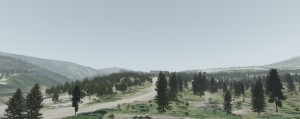
Funded by the Swiss National Science Foundation SNSF, and in collaboration with the Collaborative for Advanced Landscape Planning (CALP), particularly Ellen Pond, the City of Kimberley, and the Columbia Basin Trust (CBT), I analysed the benefits and limitations of interactive virtual globes for stakeholder engagement in climate related scenario planning over the last 12 months. The results have now been published as SNSF report and can be downloaded here.
